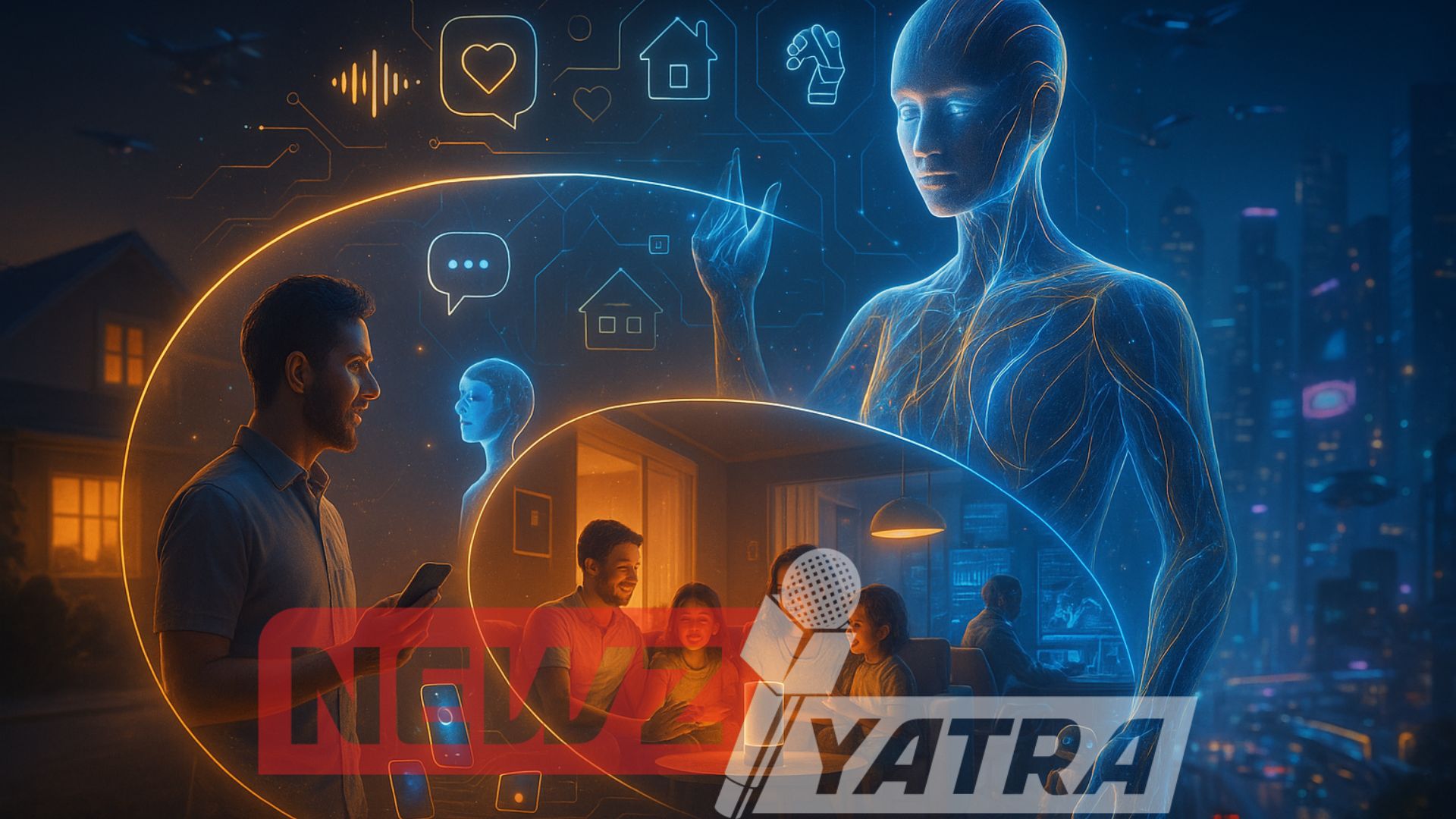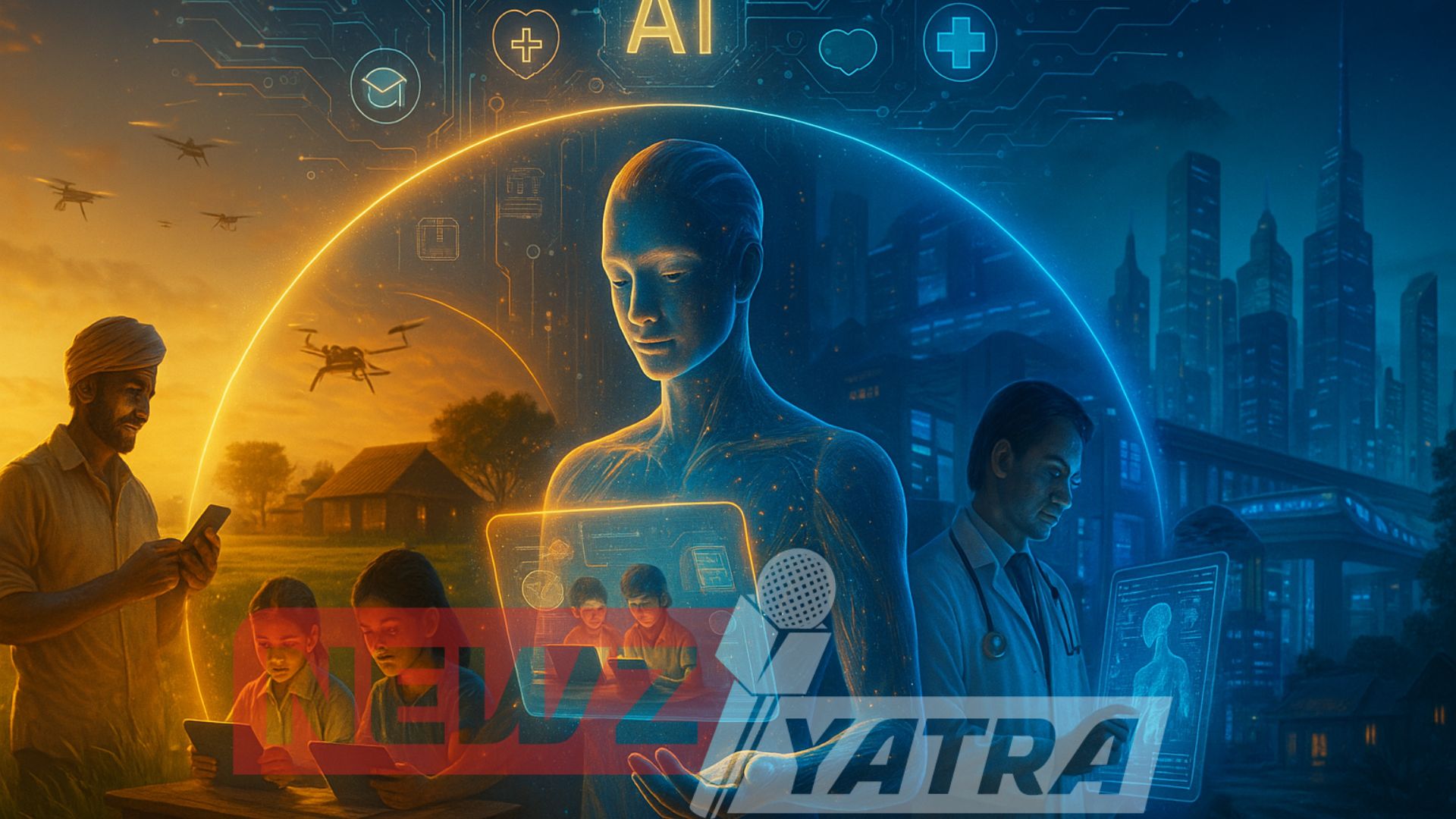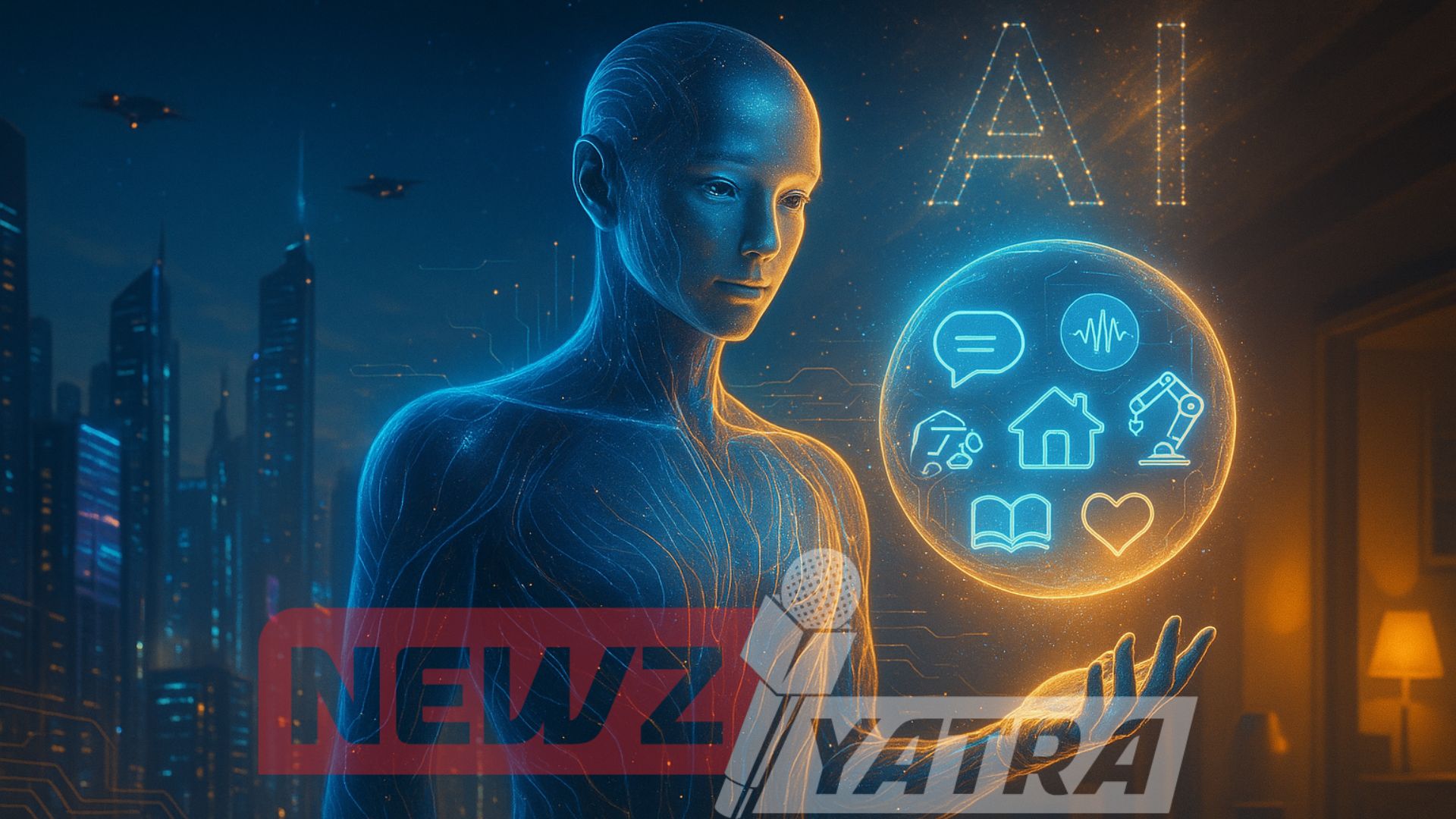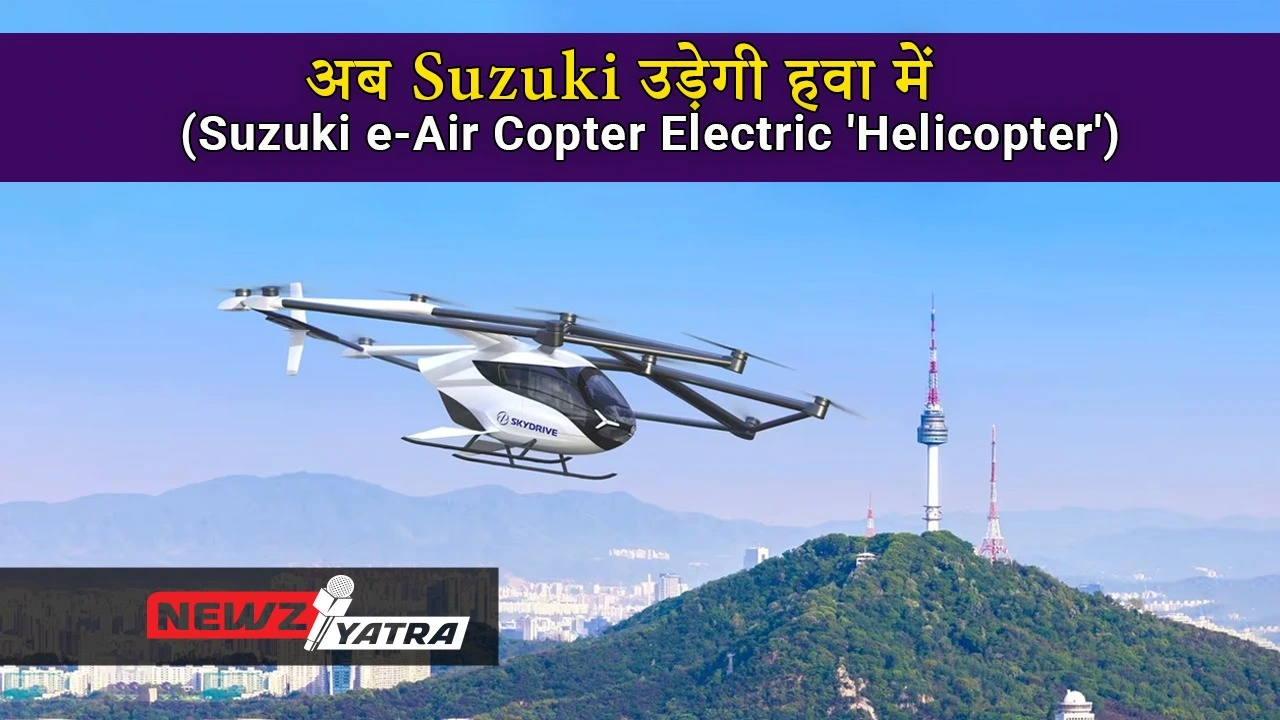Trump Declared India’s Economy “Dead”? A Reality Check with American AI!
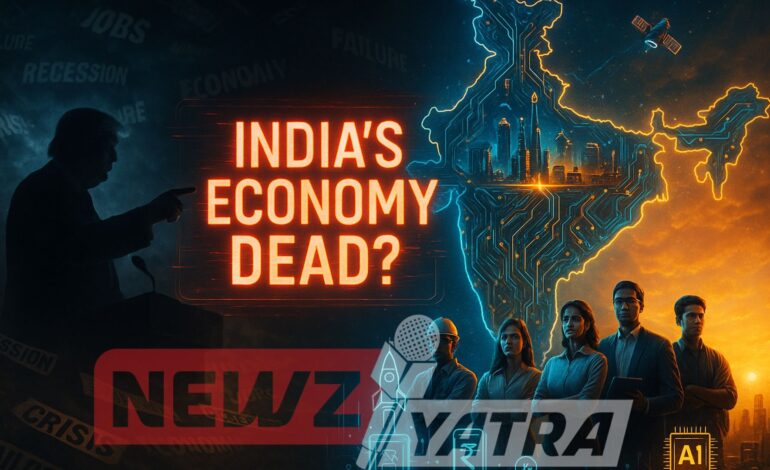
In a world driven by headlines and hashtags, it’s easy for bold political statements to go viral—regardless of their accuracy. Recently, social media has been abuzz with claims that former U.S. President Donald Trump called India’s economy “dead.” The statement, if true, carries weight not only because of Trump’s global influence but also due to the strategic ties between the United States and India. (Trump on India economy)
But did he actually say that? If so, in what context? And what does it really mean for the world’s fifth-largest economy?
In this post, we turn to American AI for a clear, unbiased breakdown. We’ll trace the origins of the claim, verify the facts, analyze the political and economic implications, and most importantly—separate perception from reality.
Let’s set the record straight. (Trump on India economy)
India’s Economic Challenges: What’s the Reality? (Trump on India economy)
While former U.S. President Donald Trump may not have literally declared India’s economy “dead,” such a characterization misrepresents the complex and dynamic reality of the country’s economic situation. India is neither an unstoppable economic juggernaut nor a collapsing system—it stands somewhere in between, with remarkable growth tempered by persistent challenges.
Strong Post-COVID Recovery (Trump on India economy)
India, like much of the world, saw a severe economic contraction in 2020 due to the COVID-19 pandemic. However, its recovery has been impressive. By 2023, GDP growth had surged to 7.8%, placing India among the fastest-growing major economies globally. The rebound was driven by increased domestic consumption, government-led infrastructure spending, and a revival in services and manufacturing sectors.
The Rise of the Middle Class and Consumption Power (Trump on India economy)
India’s growing middle class is transforming the country into a powerful consumer economy. Urbanization, rising incomes, and widespread internet access have fueled demand in sectors like retail, real estate, digital services, and automobiles. E-commerce and fintech are booming, particularly among younger consumers in Tier 2 and Tier 3 cities.
A Thriving Startup Ecosystem (Trump on India economy)
India has emerged as a global startup powerhouse. The country is home to over 100 unicorns—privately held startups valued at over $1 billion—spanning sectors like fintech, edtech, healthtech, and logistics. Venture capital investment has remained resilient, and government initiatives like Startup India and Digital India have provided a platform for innovation and entrepreneurship.
But beneath the high-growth headlines, there are serious structural challenges that could hamper long-term sustainability:
1. High Youth Unemployment (Trump on India economy)
India’s demographic dividend is both an opportunity and a challenge. With over half the population under the age of 30, the demand for jobs is immense. Yet youth unemployment remains stubbornly high, particularly among educated graduates, highlighting a disconnect between academic institutions and the job market.
2. Rural Poverty and Underemployment (Trump on India economy)
Despite urban prosperity, rural India continues to struggle. Agriculture still employs over 40% of the workforce but contributes less than 20% to GDP. Underemployment is widespread, and rural poverty persists, especially in states with weak infrastructure and limited access to education and healthcare.
3. Banking Sector Stress (Trump on India economy)
While reforms have strengthened parts of the financial system, India’s banking sector continues to deal with non-performing assets (NPAs), especially among public sector banks. Credit growth has picked up recently, but concerns about financial stability and access to capital for small businesses remain.
4. Inflationary Pressures (Trump on India economy)
Rising food and fuel prices have put pressure on household budgets and complicated monetary policy. The Reserve Bank of India (RBI) has responded with cautious rate hikes, but global commodity volatility continues to pose risks.
U.S.–India Economic Ties: More Strategic Than Ever (Trump on India economy)
Ironically, despite former President Donald Trump’s occasional frustration with India over trade imbalances and tariffs, U.S.–India economic cooperation has only strengthened—both during and after his time in office. In fact, the economic relationship between the world’s largest and oldest democracies is now more strategic than ever
1 The U.S. Is Now India’s Largest Trading Partner (Trump on India economy)
In a significant shift, the United States has overtaken China to become India’s top trading partner, with bilateral trade surpassing $130 billion in recent years. This reflects not only growing commercial ties but also a deliberate effort by both countries to diversify away from Chinese supply chains and deepen cooperation on technology, energy, and services.
2 Strategic Agreements in Key Sectors (Trump on India economy)
Under both Republican and Democratic administrations, Washington and New Delhi have signed major agreements in semiconductors, defense technology, clean energy, and critical minerals. The U.S.–India Initiative on Critical and Emerging Technology (iCET) is a prime example—focusing on artificial intelligence, quantum computing, 5G/6G, biotech, and space collaboration. These areas go beyond trade; they are geopolitical imperatives.
3 U.S. Companies Are Doubling Down on India (Trump on India economy)
Global giants like Apple, Google, Amazon, Tesla, and Microsoft are increasingly investing in India—not just to sell to Indian consumers but to manufacture, innovate, and build out local supply chains. Apple, for instance, has ramped up iPhone production in India, aiming to make it a global export hub. This trend aligns with India’s “Make in India” and “Atmanirbhar Bharat” (self-reliant India) initiatives, while giving U.S. firms access to a vast talent pool and cost-effective operations.
4. A Relationship Grounded in Mutual Long-Term Benefit (Trump on India economy)
Even though Trump criticized some of India’s trade practices—such as import tariffs on American goods—the broader economic and strategic relationship has remained on an upward trajectory. Both countries view each other as vital partners in a multipolar world, particularly in light of shared concerns about China, supply chain security, and global technology governance.
What Does American AI Say? (Trump on India economy)
As an AI developed in the United States with a global perspective, here’s an objective conclusion:
No, Donald Trump has not officially declared India’s economy “dead.” Any such claim circulating online is almost certainly a distortion or social media exaggeration.
The reality is more complex—and far more optimistic.
India’s economy is not only alive but resilient and evolving. It has its share of deep-rooted challenges—such as unemployment, rural underdevelopment, and financial sector stress—but also boasts one of the highest growth rates in the world, a thriving digital economy, and a rising middle class fueling long-term potential. (Trump on India economy)
Meanwhile, U.S.–India economic relations are stronger than ever. Trade, investment, and technological collaboration are deepening across both commercial and strategic sectors—from semiconductors to defense, clean energy, and digital innovation. This partnership is driven by mutual interests and underpinned by a shared democratic ethos.Bottom line: The narrative of economic decline doesn’t reflect the facts. India’s economic journey is not without hurdles, but its trajectory points toward continued relevance, resilience, and global integration—especially alongside a deepening U.S. partnership.
From Rhetoric to Reality: India’s Economic Story Isn’t Ending—It’s Evolving (Trump on India economy)
In an age dominated by viral soundbites and fast-moving misinformation, it’s more important than ever to pause, check the facts, and put provocative claims into proper context—especially when they concern major global players like the United States and India.
Donald Trump’s rhetoric often generates headlines, but it’s not always meant to be taken literally. His comments, whether on trade or foreign economies, tend to simplify complex realities for effect. That’s why bold statements—like the idea that India’s economy is “dead”—should be scrutinized against real data, long-term trends, and nuanced analysis. (Trump on India economy)
The truth is, India’s economic journey is far from over. Despite real challenges—unemployment, inflation, rural underdevelopment—the country is in the midst of a transformative phase. It is building digital infrastructure at scale, nurturing a booming startup ecosystem, and expanding its role in global supply chains and geopolitics.
Rather than collapsing, India is entering a new chapter—one shaped by ambition, resilience, and strategic partnerships, including a deepening economic bond with the United States. The future will demand reforms, innovation, and inclusive growth—but it also offers India a chance to reshape its global economic identity.
So no, the Indian economy isn’t “dead.” It’s alive, evolving, and writing its next chapter—on its own terms.
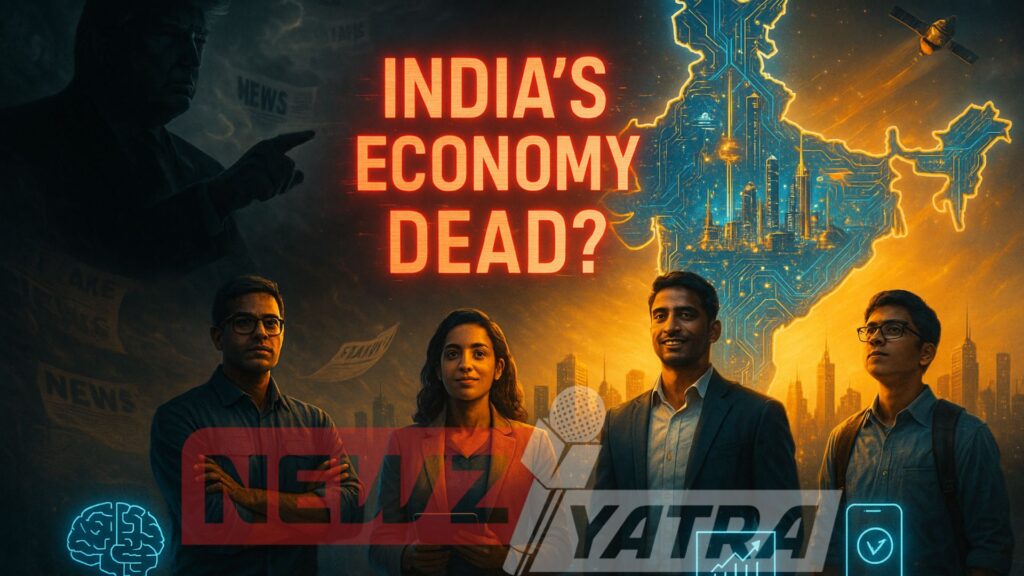
Stay Informed. Think Critically. Share Responsibly. (Trump on India economy)
In a world where misinformation spreads faster than facts, your voice—and your judgment—matter more than ever. Don’t just scroll past bold claims and viral headlines. Question them. Research them. Understand the full picture.
India’s economic story is still unfolding, and how we talk about it shapes global perception. Whether you’re a student, policymaker, business leader, or simply a curious reader, be part of the conversation with clarity, not confusion.
Here’s what you can do next: (Trump on India economy)
- Verify before sharing—always check the source and context.
- Engage with facts—not just headlines or social media noise.
- Share this post with anyone who’s seen or asked about the “India is dead” narrative. Let’s replace drama with data.
Let’s make truth go viral—for a change.
Cryptocurrency in 2025: What You Need to Know Before Investing!
FAQs: Trump, India’s Economy, and U.S.–India Relations
Q1: Did Donald Trump actually say “India’s economy is dead”?
A: No, there is no official record or verified public statement where former President Donald Trump directly declared India’s economy “dead.” This appears to be a misquote or exaggeration, likely amplified on social media. Trump has criticized India’s trade policies in the past, but not in those exact terms.
Q2: Is India’s economy really struggling as badly as some say?
A: India faces real economic challenges—including high youth unemployment, inflation, and rural underdevelopment—but it is not collapsing. In fact, India recorded 7.8% GDP growth in 2023, among the fastest globally. The economy is recovering and evolving, driven by a strong services sector, growing middle class, and a vibrant startup ecosystem.
Q3: What are the main challenges facing India’s economy right now?
A:
- Youth unemployment
- Rural poverty and underemployment
- Banking sector stress (bad loans)
- Inflation and global commodity price pressures
These are structural issues that require policy focus and long-term reforms.
Q4: How is the U.S.–India economic relationship doing?
A: Better than ever. The U.S. is now India’s largest trading partner, and both countries have signed key strategic agreements in areas like semiconductors, defense tech, energy, and digital infrastructure. American companies like Apple, Google, and Tesla are heavily investing in India.
Q5: Why does misinformation about global economies spread so quickly?
A: Social media often favors viral, emotional, or dramatic content over accuracy. Statements taken out of context—or fabricated altogether—can be easily shared without verification. That’s why it’s crucial to check sources and seek reliable analysis.
Q6: What role does AI play in clarifying economic facts?
A: AI, when trained on credible data and used objectively, can help analyze complex issues, debunk misinformation, and present balanced perspectives. In this case, “American AI” offers a neutral viewpoint by comparing rhetoric with real economic data.
Q7: What can I do when I see exaggerated claims online?
A:
✅ Pause before sharing
✅ Check credible sources (news outlets, government data, expert analysis)
✅ Engage in thoughtful conversations—not arguments
✅ Report or flag misleading content if it spreads misinformation
